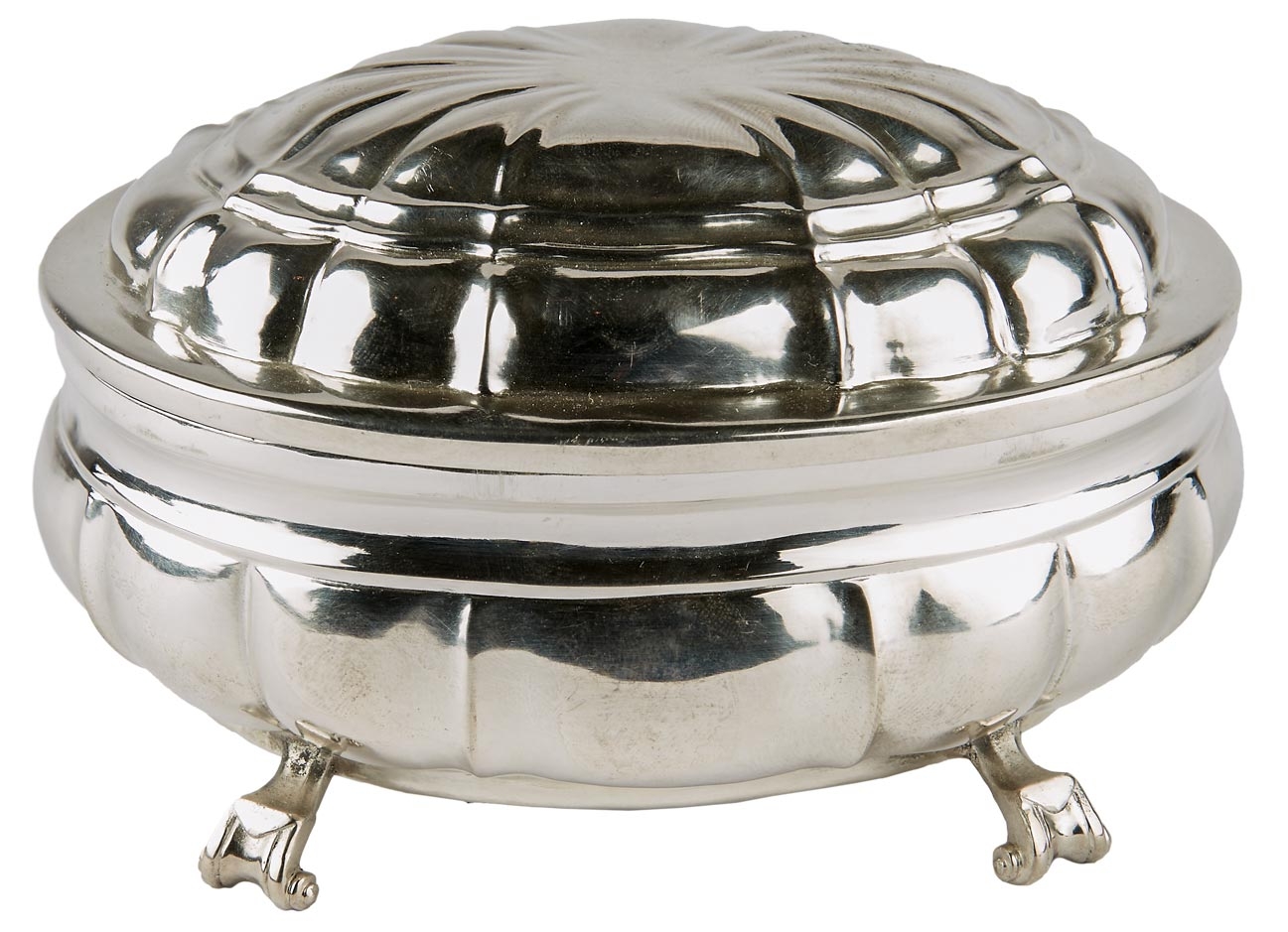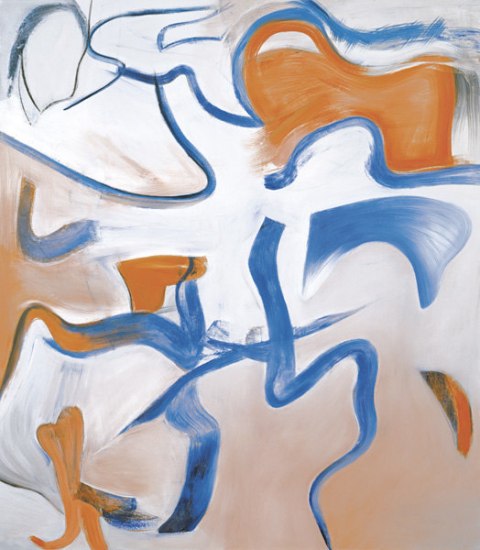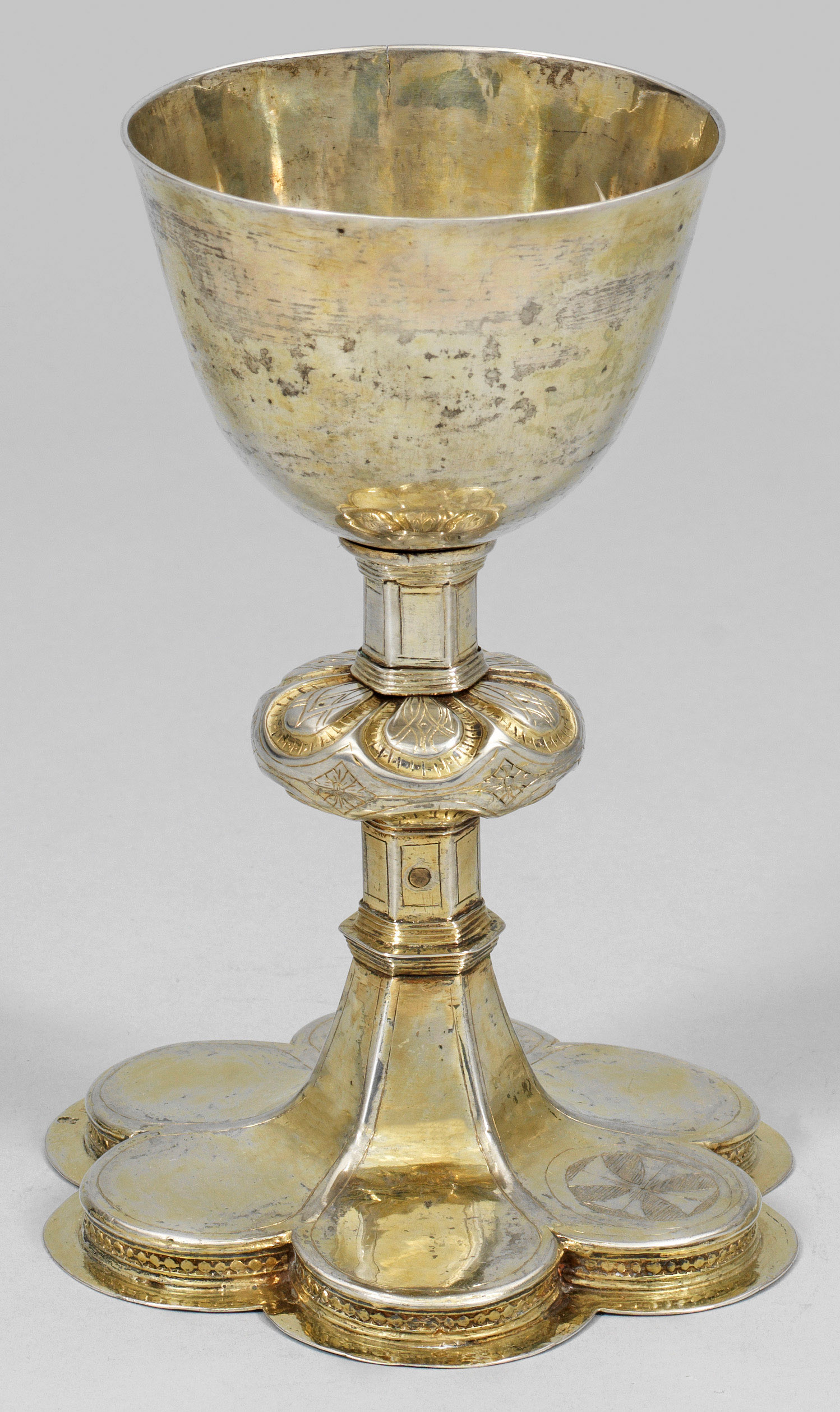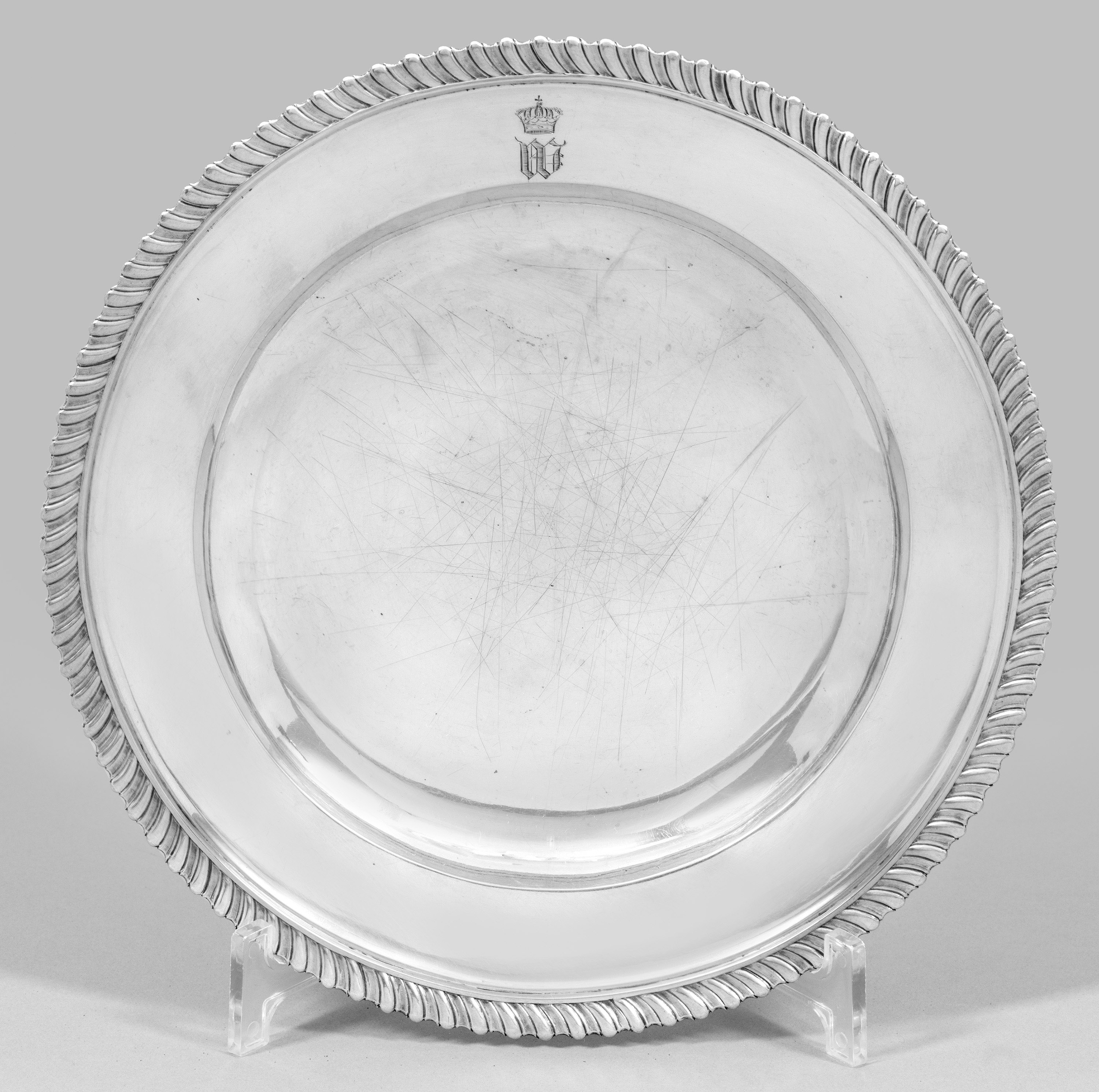The Rosenberg Master (active c.1475-1495) The Molé Hours, use of Troyes, in Latin, illuminated manuscript on vellum [France, probably Lyon, c.1480] A profusely-illustrated volume, after which the illuminator is named, made for a member of a prominent family. c.155 x 105mm. i + 128 + i leaves, collation: 12, 26, 3-108, 114, 12-178, 184, with contemporary vellum interleaving facing the miniatures, modern pencil foliation in the lower left corner, counting the interleaving, 1-143 followed here, with occasional catchwords, leaf signatures, and instructions to the illuminator, 24 lines, rubrics sometimes very calligraphic, ruled space: c.85 x 55mm, illuminated with a full-page armorial frontispiece, 12 full-page miniatures, 34 historiated initials, 24 small calendar miniatures, and a one-sided panel border on every text page (approximately 270 in all), with one- and two-line illuminated initials throughout (3 miniatures removed before the manuscript was rebound in the 16th century: text before none, the Seven Penitential Psalms and the Obsecro te supplied in an early hand). 20th-century polished black calf, the spine re-using an 18th-century green leather title-piece lettered in gilt capitals ‘Officium B.V.M Cod[ex]. in me[mbranis]’. Leather book-box, the front cover embossed with a French(?) monogram of the letters A and E, the spine lettered in gilt capitals ‘Horae B.V.M.’ and ‘Troyes’. Content: Armorial frontispiece f.2; Calendar ff.3-8v, with numerous saints venerated at Troyes including Frodobert (8 January), Patroclus (19 January), Savinian (24 January, duplex, in red, with octave, and his translation, 2 March), Sabina (29 January), Mastidia (7 May, duplex, in red), Fidolus (16 May), Ursus (26 July, perhaps a contemporary addition), Camelianus (28 July), Lupus of Troyes (29 July, in red, with octave, and his translation, 10 May), and Bercharius (16 October); Gospel extracts ff.10-13v; the Passion narrative based on John ff.15-20v; Hours of the Virgin ‘secundum usum ecclesie Trecensis’ ff.22-82: matins f.22, lauds f.35, prime f.43, terce f.48, sext f.53, none f.57, vespers f.60, compline f.67; Hours of the Cross ff.82v-85v; Hours of the Holy the Spirit ff.87-88v; Penitential Psalms and Litany ff.90-102, the litany with Quiriac and Aygulphe immediately after Stephen at the beginning of the martyrs, and other Troyes saints including Lupus, Frodobert, and Mastidia; Office of the Dead ff.102v-128v; Obsecro te f.130v, O intemerata f.132v, and ‘Excellentissima domina et gloriosissima virgo’ f.135v (masculine forms); suffrages to saints ff.136v–142, including Claudius. Illumination: The artist is named after this manuscript 'The Rosenberg Master'. He belongs to a well-defined group of artists whose manuscripts share stylistic and compositional features, based in Lyon, a major commercial crossroads at the confluence of the Saone and Rhone rivers. One of the finest manuscripts of the group, and perhaps the earliest, is a Book of Hours at the Getty Museum (MS 10), datable to 1478. It may be that the master of the Getty Hours was the earliest exponent of the style, and that the several related artists were successively his apprentices, and perhaps also his relatives: the Rosenberg Master, the Boilly Master, the Master of Guillaume Lambert, and others. They appear to have been active from about 1475 until about 1495. The Getty Hours exhibits many of the most distinctive features of the group, such as the frames within which miniatures are set: each side is like a giltwood gothic architectural square pier set at a 45-degree angle to the viewer, each with two superimposed niches occupied by prophets or similar figures; the upper and lower frames are plain, but in many manuscripts (including the present one) the lower frame has the opening words of the following text written in very distinctive display capitals, including a backwards ‘N’, an open-topped ‘D’ similar to a 'U' or an 'LS' ligature, a long horizontal serif at the top left of the
The Rosenberg Master (active c.1475-1495) The Molé Hours, use of Troyes, in Latin, illuminated manuscript on vellum [France, probably Lyon, c.1480] A profusely-illustrated volume, after which the illuminator is named, made for a member of a prominent family. c.155 x 105mm. i + 128 + i leaves, collation: 12, 26, 3-108, 114, 12-178, 184, with contemporary vellum interleaving facing the miniatures, modern pencil foliation in the lower left corner, counting the interleaving, 1-143 followed here, with occasional catchwords, leaf signatures, and instructions to the illuminator, 24 lines, rubrics sometimes very calligraphic, ruled space: c.85 x 55mm, illuminated with a full-page armorial frontispiece, 12 full-page miniatures, 34 historiated initials, 24 small calendar miniatures, and a one-sided panel border on every text page (approximately 270 in all), with one- and two-line illuminated initials throughout (3 miniatures removed before the manuscript was rebound in the 16th century: text before none, the Seven Penitential Psalms and the Obsecro te supplied in an early hand). 20th-century polished black calf, the spine re-using an 18th-century green leather title-piece lettered in gilt capitals ‘Officium B.V.M Cod[ex]. in me[mbranis]’. Leather book-box, the front cover embossed with a French(?) monogram of the letters A and E, the spine lettered in gilt capitals ‘Horae B.V.M.’ and ‘Troyes’. Content: Armorial frontispiece f.2; Calendar ff.3-8v, with numerous saints venerated at Troyes including Frodobert (8 January), Patroclus (19 January), Savinian (24 January, duplex, in red, with octave, and his translation, 2 March), Sabina (29 January), Mastidia (7 May, duplex, in red), Fidolus (16 May), Ursus (26 July, perhaps a contemporary addition), Camelianus (28 July), Lupus of Troyes (29 July, in red, with octave, and his translation, 10 May), and Bercharius (16 October); Gospel extracts ff.10-13v; the Passion narrative based on John ff.15-20v; Hours of the Virgin ‘secundum usum ecclesie Trecensis’ ff.22-82: matins f.22, lauds f.35, prime f.43, terce f.48, sext f.53, none f.57, vespers f.60, compline f.67; Hours of the Cross ff.82v-85v; Hours of the Holy the Spirit ff.87-88v; Penitential Psalms and Litany ff.90-102, the litany with Quiriac and Aygulphe immediately after Stephen at the beginning of the martyrs, and other Troyes saints including Lupus, Frodobert, and Mastidia; Office of the Dead ff.102v-128v; Obsecro te f.130v, O intemerata f.132v, and ‘Excellentissima domina et gloriosissima virgo’ f.135v (masculine forms); suffrages to saints ff.136v–142, including Claudius. Illumination: The artist is named after this manuscript 'The Rosenberg Master'. He belongs to a well-defined group of artists whose manuscripts share stylistic and compositional features, based in Lyon, a major commercial crossroads at the confluence of the Saone and Rhone rivers. One of the finest manuscripts of the group, and perhaps the earliest, is a Book of Hours at the Getty Museum (MS 10), datable to 1478. It may be that the master of the Getty Hours was the earliest exponent of the style, and that the several related artists were successively his apprentices, and perhaps also his relatives: the Rosenberg Master, the Boilly Master, the Master of Guillaume Lambert, and others. They appear to have been active from about 1475 until about 1495. The Getty Hours exhibits many of the most distinctive features of the group, such as the frames within which miniatures are set: each side is like a giltwood gothic architectural square pier set at a 45-degree angle to the viewer, each with two superimposed niches occupied by prophets or similar figures; the upper and lower frames are plain, but in many manuscripts (including the present one) the lower frame has the opening words of the following text written in very distinctive display capitals, including a backwards ‘N’, an open-topped ‘D’ similar to a 'U' or an 'LS' ligature, a long horizontal serif at the top left of the
.jpg)
.jpg)
.jpg)
.jpg)





Testen Sie LotSearch und seine Premium-Features 7 Tage - ohne Kosten!
Lassen Sie sich automatisch über neue Objekte in kommenden Auktionen benachrichtigen.
Suchauftrag anlegen